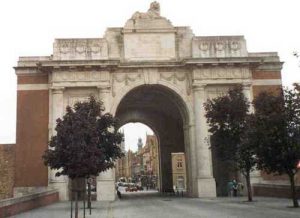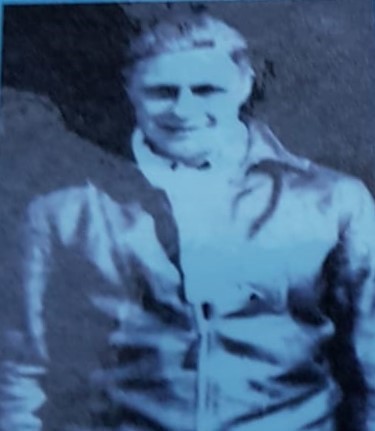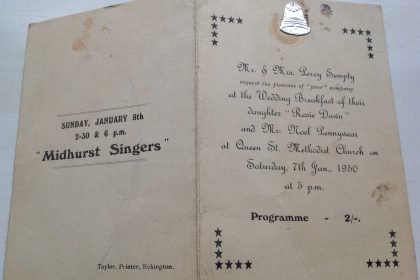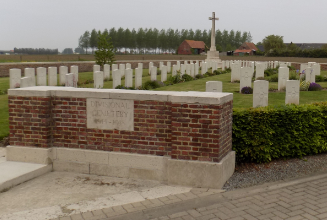Percy Schwartz 1/6th Battalion Notts and Derby (Sherwood Foresters) Regiment. Regimental number 1861 Died10 August 1915 Buried at Ypres (Menin Gate) Memorial Ypres (Ieper), Arrondissement Ieper, West Flanders Belgium. Panel 39 and 41.
The Ypres (Menin Gate) Memorial, often referred to simply as the Menin Gate, bears the names of more than 54,000 soldiers who died before 16 August 1917 and have no known grave.
Between October 1914 and September 1918 hundreds of thousands of servicemen of the British Empire marched through the town of Ypres’s Menin Gate on their way to the battlefields. The memorial now stands as a reminder of those who died who have no known grave and is perhaps one of the most well-known war memorials in the world.
The Salient was formed during the First Battle of Ypres in October and November 1914, when a small British Expeditionary Force succeeded in securing the town before the onset of winter, pushing the German forces back to the Passchendaele Ridge. The Second Battle of Ypres began in April 1915 when the Germans released poison gas into the Allied lines north of Ypres. This was the first time gas had been used by either side and the violence of the attack forced an Allied withdrawal and a shortening of the line of defence.
There was little more significant activity on this front until 1917, when in the Third Battle of Ypres an offensive was mounted by Commonwealth forces to divert German attention from a weakened French front further south. The initial attempt in June to dislodge the Germans from the Messines Ridge was a complete success, but the main assault north-eastward, which began at the end of July, quickly became a dogged struggle against determined opposition and the rapidly deteriorating weather. The campaign finally came to a close in November with the capture of Passchendaele.
The German offensive of March 1918 met with some initial success, but was eventually checked and repulsed in a combined effort by the Allies in September.
Having seen some of the heaviest fighting in the First World War, Ypres was in ruins. The Town Major of Ypres Henry Beckles Willson described it as ‘holy ground’ and felt the area should not be rebuilt but remain a memorial. However, this was not to be and the town was rebuilt.
The battles of the Ypres Salient claimed many lives on both sides and it quickly became clear that the commemoration of members of the Commonwealth forces with no known grave would have to be divided between several different sites. The site of the Menin Gate was chosen because of the hundreds of thousands of men who passed through it on their way to the battlefields.
It commemorates casualties from the forces of Australia, Canada, India, South Africa and United Kingdom who died in the Salient. In the case of United Kingdom casualties, only those prior 16 August 1917 (with some exceptions). United Kingdom and New Zealand servicemen who died after that date are named on the memorial at Tyne Cot, a site which marks the furthest point reached by Commonwealth forces in Belgium until nearly the end of the war. New Zealand casualties that died prior to 16 August 1917 are commemorated on memorials at Buttes New British Cemetery and Messines Ridge British Cemetery.
Copyrights www.cwgc.com/ Linda Taylor









